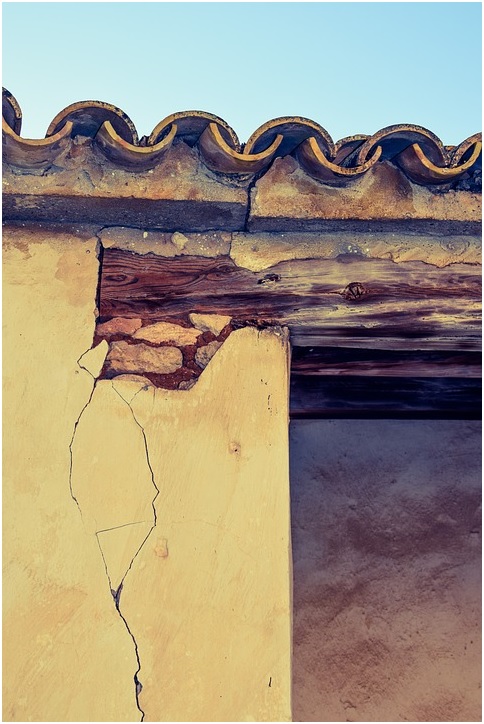Your roof construction provides you with defense against wind, rain, snow, hail and heat. Every day your roof is exposed to weather hazards and other elements, all of which contribute to its damage and deterioration.
The primary cause of roof problems is a poorly maintained roof. As one of the largest parts of your house, it requires regular inspection, maintenance and repair. The most vulnerable part of your home, the lifespan of a roof can be shortened dramatically if neglected. With proper maintenance, your roof can last quite long. If you need a new one you can check roof experts to change your roof www.roofandrender.com.au/roof-replacement-adelaide.
It becomes obvious and not surprising that the roofing area is one of the biggest problem areas in the building structure and there are few common mistakes that needs to be avoided. Given below are lists of few mistakes to keep in mind while roof construction.
Roof Flashing
When a roof leaks, the problem is often due to leaks in and around the metal roof flashing that protects roof edges, valleys, and the junctions between roofing and obstructions such as chimneys, dormers, and vent pipes.If your roof leaks, the chances are pretty good that deteriorating metal roof flashing is the culprit. Flashing protects the intersections between roof planes; the joints where roofing meets dormers, skylights, and chimneys; and a roof’s edges. Flashing can cause open seams and laps and ultimately cause tiles to blow-off. Improperly installed flashing can also reduced puncture resistance in your roof.
Incorrect roof installation
Every roofing manufacturer has specific regulations on how their roofs must be installed. Items, such as number of nails per shingle, can determine whether a manufacturer will stand behind their warranty should the roof fail earlier than the guaranteed lifespan.

Roof Ventilation
Since most roofs are under ventilated, many people have no idea just how much roof ventilation they need, or what kind to purchase. A lack of ventilation can cause a whole host of problems in and around your home. Depending on the climate that you live in, lack of proper ventilation can have a serious impact on your energy bills and the lifespan of things like your roof.

Roof Drainage
One of the most important things that helps divert water away from your home or building is a properly-installed roof drainage system. Drainage play a vital role in effectively removing water and debris from the roof, and minimizing groundwater accumulation around your foundation.
However many times they are overlooked when it comes to proper maintenance and care, and can become the culprit for many types of damage if they are not properly maintained. This includes wet basements, mold growth, and even a weakening foundation. Your roof drainage systems – including gutters, interior drains, and scuppers should be free of accumulated debris such as twigs, leaves, and granules from roof systems, such as modified bitumen on flat roofs and asphalt shingles on sloped roofs.

Roofing Drip Edge
The drip edge (also called eave flashing) consists of angled aluminum strips nailed into place over the underlayment on the sides of the roof at the edges and beneath the underlayment at the eaves. The drip edge prevents water from building up, guiding it over the eaves and into the gutters. The shingles, whether they are asphalt, metal, clay or other material, make up the “outer shell” of your home’s roofing system. This system, when installed and working properly, provides your home with the protection it needs to withstand all but the worst weather.
Incorrect Shingle Roofing Installation
Underlayment serves as weatherproofing barriers beneath the roof’s asphalt shingles. Incorrectly applied moisture barriers can lead to leaking roofs. An experienced roofing contractor will install a waterproof, adhesive membrane along valleys and eaves, as well as ice and water shields to protect wood decking, chimneys, pipe flanges and roof connections.
Roof coating
A roof coating can be the right choice for a commercial property, especially in a time when labor costs and environmental concerns are rising. A coating can be a good cost-effective option over a full roof replacement, but it’s important to do your research concerning the condition of the roof and its location, slope, and exposure to chemicals, heat, and UV rays. Check out our comparison of strengths and weaknesses to help you determine which coating material is best for your next commercial roofing job. Roof coatings differ from region to region; hence it is important to understand the system.
Improper Nail Usage
It is important to apply roofing nails in the right quantity and location to securely lock a shingle into its place. Accurate nailing affects the performance of roofing shingles and it is also required by the International Building Code. A common reason for this is the use of nails that are too short. When there are popped nails all over the roof, it might be the sign of a defective roof installation; specifically, short nails. Some roofers don’t seem to pay a lot of attention to these instructions. That is why we want to highlight the two most common nailing defects with shingles: overdriven nails and improperly located nails. Many roofers use pneumatic nail guns to nail down the shingles. When the pressure is set too high, the nails simply get driven into the shingles too far. When the nails are overdriven, the heads of the nails punch right through the mat of the shingle.
Shrinkage and Blistering
Shrinkage is caused when the roof membrane (the stuff under the tiles or shingles) shrinks, most often causing cracks or crazing in the upper layer. Blistering, ridging, splitting, and surface erosion of shingles can eventually lead to bigger problems



